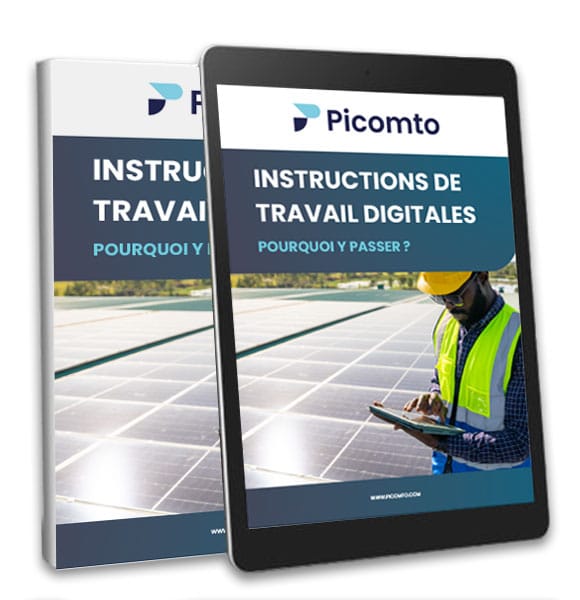Did you know that the agri-food industry generates over 180 billion euros in revenue in France? How can companies in this sector maintain their competitiveness in the face of growing productivity and quality challenges? The industrial agri-food production line constitutes the nerve center of this strategic industry. Indeed, optimizing these production lines becomes crucial to meet strict regulatory requirements, consumer expectations, and profitability imperatives.
Furthermore, digitalization is radically transforming traditional production methods. Moreover, new technologies offer unprecedented opportunities for performance improvement. This guide will therefore accompany you in understanding and optimizing your agri-food production line.

Key Points to Remember Regarding Industrial Agri-Food Production Lines:
- Essential Components: Processing equipment, quality control systems, and traceability tools
- Digital Optimization: Digitalization of procedures and automation of controls
- Regulatory Compliance: Adherence to food safety standards and rigorous documentation
- Cost Reduction: Productivity improvement through error elimination and process optimization
Do you want to transform your production line?
Contact our experts for a personalized analysis of your processes.
1. Agri-Food Production Line: What Are the Essential Components?
A modern agri-food production line integrates numerous interconnected elements. Nevertheless, understanding these components allows for the identification of optimization levers. Moreover, each element plays a crucial role in the overall value chain.
1.1. Primary Processing Equipment
Processing equipment constitutes the backbone of any agri-food production line. First, they include:
- Automated Conveyors: Smooth transport of raw materials
- Cutting and Preparation Machines: Precise product processing
- Cooking and Cooling Systems: Control of thermal parameters
- Packaging Equipment: Protection and conditioning of finished products
Subsequently, these machines must operate in perfect synchronization. Thus, their preventive maintenance becomes paramount to avoid production stoppages.
1.2. Quality Control Systems
Quality represents a major challenge in the agri-food sector. Consequently, control systems integrate:
- Temperature and Humidity Sensors: Continuous monitoring of critical parameters
- Metal and Contaminant Detectors: Security of finished products
- Industrial Vision Cameras: Automated visual inspection
- Physico-Chemical Analyzers: Composition verification
Indeed, these technologies guarantee compliance with the most demanding standards.
1.3. Traceability and Documentation Tools
Traceability constitutes an unavoidable legal obligation. Notably, it requires:
- RFID Systems and Barcodes: Unique identification of each batch
- Production Management Software: Data centralization
- Digital Documentation Solutions: Dematerialized work instructions
- Reporting Platforms: Real-time performance analysis
Moreover, Picomto revolutionizes this approach by completely digitalizing process documentation.
2. Agri-Food Production Line: How to Optimize Efficiency?
Optimizing an agri-food production line requires a methodical and technological approach. However, this approach necessitates a global vision of processes. Furthermore, productivity gains are achieved through continuous improvement.
2.1. Digitalization of Production Procedures
Digitalization radically transforms traditional methods. First, it brings:
- Paper Elimination: Elimination of loss or contamination risks
- Real-Time Updates: Instantaneous distribution of modifications
- Mobile Accessibility: Consultation on tablets and industrial terminals
- Complete History: Traceability of actions and decisions
Furthermore, this approach significantly reduces human errors. Additionally, it improves reactivity to unexpected situations.
2.2. Quality Control Automation
Control automation revolutionizes quality management. Thus, it enables:
- Systematic Controls: Verification of 100% of production
- Immediate Alerts: Early detection of deviations
- Cost Reduction: Decrease in waste and rework
- Regularity Improvement: Process standardization
Indeed, these systems guarantee consistent and predictable quality.
2.3. Intelligent Work Instruction Management with Picomto
Picomto offers an innovative solution for instruction management. Notably, it provides:
- Interactive Visual Instructions: Step-by-step operator guidance
- Automatic Validation: Control of proper execution
- Data Collection: Automatic information feedback
- Advanced Analytics: Performance and trend analysis
Moreover, this solution adapts perfectly to agri-food constraints.
3. Agri-Food Production Line: Which Standards and Regulations to Comply With?
The agri-food sector is subject to particularly strict regulations. Nevertheless, this constraint becomes a competitive advantage for well-organized companies. Furthermore, digital compliance considerably simplifies regulatory management.

3.1. Food Safety Standards
International standards impose rigorous requirements. First, they include:
- HACCP: Hazard Analysis and Critical Control Points
- IFS and BRC: Globally recognized food safety standards
- ISO 22000: Food safety management system
- Local Regulations: Compliance with national and European requirements
Consequently, their implementation requires exhaustive and updated documentation.
3.2. Process Documentation
Documentation constitutes the pillar of regulatory compliance. Thus, it includes:
- Operating Procedures: Detailed description of steps
- Cleaning and Disinfection Plans: Strict hygiene protocols
- Production Records: Evidence of proper execution
- Audits and Verifications: Periodic compliance checks
Indeed, this documentation must be accessible, up-to-date, and verifiable at all times.
3.3. Digital Compliance with Picomto
Picomto considerably facilitates compliance management. Notably, the solution enables:
- Pre-Configured Templates: Models compliant with sector standards
- Validation Workflow: Automated approval circuit
- Secure Archiving: Time-stamped document conservation
- Regulatory Reporting: Automatic generation of audit reports
Moreover, this approach guarantees permanent and controllable compliance.
4. Agri-Food Production Line: How to Reduce Costs and Improve Productivity?
Cost reduction represents a major competitiveness challenge. However, it must not compromise quality or safety. Furthermore, digital solutions offer significant optimization opportunities.
4.1. Process Optimization Through Digitalization
Digitalization generates measurable productivity gains. First, it brings:
- Downtime Reduction: Predictive maintenance and targeted interventions
- Flow Optimization: Perfect operation synchronization
- Waste Elimination: Precise consumption traceability
- OEE Improvement: Overall Equipment Effectiveness optimization
Furthermore, these gains accumulate and generate significant ROI quickly.
4.2. Error Reduction Through Digital Instructions
Human errors represent a significant hidden cost. Thus, digital instructions enable:
- Precise Visual Guidance: Elimination of ambiguities
- Automatic Controls: Systematic step verification
- Accelerated Training: Rapid skill development for new operators
- Practice Standardization: Result reproducibility
Indeed, this approach reduces the error rate by half on average.
4.3. ROI of a Solution Like Picomto
Investment in Picomto generates rapid and measurable returns. Notably, it translates to:
- Training Cost Reduction
- Error Decrease
- Productivity Gains
- Quality Improvement
Conclusion
Optimizing an industrial agri-food production line requires a holistic approach. First, mastering essential components constitutes the foundation. Then, process digitalization unlocks significant productivity gains. Furthermore, regulatory compliance becomes simpler with appropriate tools. Finally, cost reduction is achieved through systematic elimination of inefficiency sources.
Picomto supports this transformation by offering a complete solution adapted to sector specificities. Indeed, our platform digitalizes all operational processes while guaranteeing regulatory compliance.
Ready to transform your production line?
Request your personalized demo today and discover your company’s optimization potential.
FAQ
What is industrial agri-food production?
The transformation of agricultural raw materials into finished food products.
What are the different branches of the agri-food industry?
Meat processing, dairy products, canned goods, beverages, and industrial bakery.
What are the products of the agri-food industry?
Processed foods, beverages, canned goods, frozen products, and prepared meals.
What are the agri-food sectors?
Slaughter, dairy processing, bakery, canning, and beverage industry.
What is the definition of agri-food production?
All activities involved in transforming agricultural products into food.
What are the three stages of agri-food production?
Raw material reception, processing, and finished product packaging.
What are the different food production modes?
Artisanal, semi-industrial, industrial, and automated production with integrated quality control.
What are the production stages?
Planning, sourcing, processing, quality control, packaging, and product shipping.






Leave A Comment